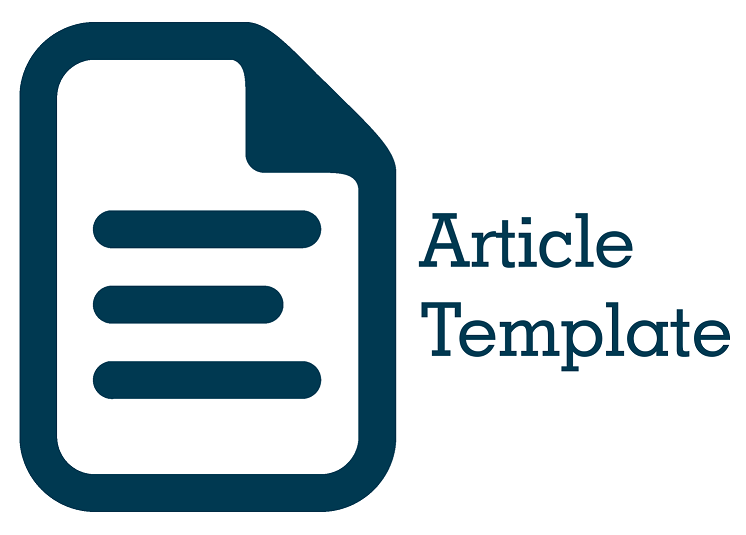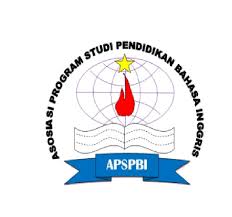Mood and Modalities Revealing Teacher’s Power in EFL Classroom Discourse: Critical Discourse Analysis
DOI:
https://doi.org/10.22515/elereviews.v4i2.9969Keywords:
power, mood, modality, CDAAbstract
This research aims to describe how power relation is exercised through mood and modality used by lecturers during the teaching and learning process in the classrooms. It is categorized as descriptive qualitative research, and the data were collected from the utterances of the English Education lecturers through non-participant observation. They were then analyzed by following three stages of Fairclough CDA. The analysis was done from textual to social practice analysis to reveal the relation between the utterance and power the lecturers practiced in the classrooms. The research finding reveals that the power is reflected through the use of imperative, interrogative, and declarative mood structures. Modality is realized through modal auxiliaries: will, would, can, must, could, may, should, and verbs; have to, think, had better, need to, be sure, perhaps, and be going to. Those expressions carry the meaning of volition, obligation, encouragement, permission, demand, and possibilities employed by the lecturers in the classes. The above meanings of those expressions represent the lecturers’ power over the students. The built power relation represents Indonesian culture in which those in higher positions play as superiors. Examining modality and mood expressions used in education will hopefully give an insight into how to build good communication.
Downloads
References
Ames, C. (1992). Classrooms: Goals, structures, and student motivation. Journal of Educational Psychology, 84(3), 261-271. https://doi.org/10.1037/0022-0663.84.3.261
Araghi, S. M., & Shayegh, K. (2011). Interpersonal metafunction of gender talk in ELT classroom. Journal of Academic and Applied Studies, 1(2), 25-32.
Arisoy, N. (2007). Examining 8th grade students’ perception of learning environment of science classrooms in relation to motivational beliefs and attitudes. [Unpublished Master Thesis]. Middle East Technical University.
Azar, B. S. (2002). Understanding and using English grammar (3rd ed.). Longman.
Baek, S. G., & Choi, H. J. (2002). The relationship between students’ perception of classroom environment and their academic achivement in Korea. Asia Pacific Education Review. 3(1), 125-135. https://doi.org/10.1007/BF03024926
Bilbow, G. T. (1997). Spoken discourse in the multicultural workplace in Hong Kong: Applying a model of discourse as ‘impression management’. In F. Bargiela-Chiappini & S. Harris (Eds.), The Languages of Business: An International Perspective (pp. 21-48). Edinburgh University Press.
Bybee, J., Perkins, R., & Pagliuca, W. (1994). The evolution of grammar: Tense, aspect, and modality in the languages of the world. University of Chicago Press.
Chionh, Y. H., & Fraser, B. J. (2009). Classroom environment, achievement, attitudes and self-esteem in geography and mathematics in Singapore. International Research in Geographical and Environmental Education. 18(1), 29-44. https://doi.org/10.1080/10382040802591530
Coates, J. (1983). The semantics of the modal auxiliaries. Croom Helm.
Collins, P. (2009). Modals and quasi-modals in English. Rodopi.
Devos, M. (2008). The expression of modality in Shangaci. Africana Linguistica, 14, 3-35.
Dorman, J. P. (2001). Associations between classroom environment and academic efficacy. Learning Environments Research, 4(3), 243-257. https://doi.org/10.1023/A:1014490922622
Eggins, S. (2004). An introduction to systemic functional linguistics (2nd ed.). Continuum.
Ekawati, R. (2019). Power through linguistic modalities in Indonesian presidential speeches. Discourse and Interaction, 12(1), 5-28. https://doi.org/10.5817/DI2019-1-5
Fairclough, N. (1989). Language and power. Longman.
Fisher, D., Henderson, D., & Fraser, B. (1995). Interpersonal behaviour in senior high school biology classes. Research in Science Education, 25(2), 125-133. https://doi.org/10.1007/BF02356447
Fraser, B. J. (1998). Science learning environments: Assessment, effects and determinants. In B. J. Fraser & K. G. Tobin (Eds.), International Handbook of Science Education (pp. 527-564). Kluwer Academic Publishers.
Frawley, W. (1992). Linguistic semantics. Routledge.
Gerot, L., & Wignell, P. (1994). Making sense of functional grammar. Antipodean Educational Enterprise.
Halliday, M. A. K. (1994). An introduction to functional grammar (2nd ed.). Edward Arnold.
Halliday, M. A. K., & Hasan, R. (1985). Language, context, and text: Aspects of language in a social-semiotic perspective. Deakin University Press.
Halliday, M. A. K., & Matthiessen C. M. I. M. (2004). An introduction to functional grammar (3rd ed.). Arnold.
Halliday, M. A. K., & Matthiessen C. M. I. M. (2014). Halliday’s introduction to functional grammar (4th ed.). Routledge.
Holmes, J., & Stubbe, M. (2003). Power and politeness in the workplace: A sociolinguistic analysis of talk at work. Pearson Education.
Huddleston, R., & Pullum, G. K. (2002). The Cambridge grammar of the English language. Cambridge University Press.
Ilham. (2019). Mood and modality of interpersonal meaning in research journal articles. Eduscience: Jurnal Ilmu Pendidikan, 5(1), 30-50.
Koester, A. (2010). Workplace discourse. Continuum.
Kratzer, A. (1981a). The notional category of modality. In H. J. Eikmeyer & H. Rieser (Eds.), Words, Worlds, and Contexts (pp. 38-74). De Gruyter. https://doi.org/10.1515/9783110842524-004
Lau, K. L., & Lee, J. C. K. (2008). Examining Hong Kong students’ achievement goals and their relations with students’ perceived classroom environment and strategy use. Educational Psychology, 28(4), 357-372. https://doi.org/10.1080/01443410701612008
Luckett, K. M., & Chick, J. K. (1998). Linguistics description in the service of history. South African Journal of Linguistics. 16(3), 81-92. https://doi.org/10.1080/10118063.1998.9724141
Lyons, J. (1977). Semantics (Vol. 1). Cambridge University Press.
Matthiessen, C. M. I. M. (1995). Lexicogrammatical cartography: English systems. International Language Sciences.
Muhyiddin, N. K. (2018). Language and power in classroom discourse. Proceedings of The International English Language Teachers and Lecturers Conference (iNELTAL) (pp. 208-212).
Nuyts, J. (2006). Modality: Overview and linguistic issues. In W. Frawley (Ed.), The Expression of Modality (pp. 1-26). De Gruyter Mouton. https://doi.org/10.1515/9783110197570.1
Oral. Y. (2009). Classroom power relations in an English as a foreign language setting from a critical pedagogical perspective. [Doctoral Dissertation, Istanbul Üniversitesi]. Istanbul Üniversitesi.
Palmer, F. R. (2003). Modality in English: Theoretical, descriptive and typological issues. In R. Facchinetti, M. Krug, & F. R. Palmer (Eds.), Modality in Contemporary English (pp. 1-18). De Gruyter Mouton. https://doi.org/10.1515/9783110895339.1
Pamuk, S., Sungur, S., & Öztekin, C. (2017). A multilevel analysis of students’ science achievements in relation to their self-regulation, epistemological beliefs, learning environment perceptions, and teachers’ personal characteristics. International Journal of Science and Mathematics Education, 15, 1423-1440. https://hdl.handle.net/11511/45842
Papafragou, A. (2000). Modality: Issues in the semantics-pragmatics interface. Elsevier.
Portner, P. (2005). Modality. Oxford University Press.
Quirk, R., Greenbaum, S., Leech, G., & Svartvik, J. (1985). A comprehensive grammar of the English language. Longman.
Qun, Z. (2010). Modality and generic features in Chinese EFL writings. Chinese Journal of Applied Linguistics, 33(5).
Reid, S. A., & Ng, S. H. (2002). Language, power, and intergroup relations. Journal of
Social Issues, 55(1), 119-139. https://doi.org/10.1111/0022-4537.00108
Saeed, J. I. (1997). Semantics. Blackwell Publishing.
Saville-Troike, M. (2003). The ethnography of communication: An introduction (3rd ed.). Blackwell Publishing.
Simpson, P. (1993). Language, ideology and point of view. Routledge.
Surjowati, R. (2016). Revealing power and ideology through modality expressions in Australian newspaper reporting Jis’s pedophilia. Proceeding of the International Seminar Prasasti III: Current Research in Linguistics (pp. 630-635). https://doi.org/10.20961/pras.v0i0.1632
Thieroff, R., (2010). Moods, moods, moods. In B. Rothstein & R. Thieroff (Eds.), Mood in the Languages of Europe (pp. 1-29). John Benjamins. https://doi.org/10.1075/slcs.120.01thi
Thomas, L., & Wareing, S. (1999). Language, society and power: An introduction. Routledge.
Touriño, A. V. (2002). Dynamic modality: English and Spanish contrasted. In L. I. Rábade & S. Mª. D. Suárez, Studies in Contrastive Linguistics: Proceedings of the 2nd International Contrastive Linguistics Conference (pp. 1041-1050).
van der Auwera, J., & Aguilar, A. Z. (2016). The history of modality and mood. In J. Nuyts & J.
van der Auwera (Eds.), The Oxford Handbook of Modality and Mood (pp. 9-27). Oxford University Press. https://doi.org/10.1093/oxfordhb/9780199591435.001.0001
van der Auwera, J., & Plungian, V. A. (1998). Modality’s semantic map. Linguistic
Typology 2(1), 79-124. https://doi.org/10.1515/lity.1998.2.1.79
van Dijk, T. A. (2008). Discourse and power. Palgrave Macmillan.
Vine, B. (2004). Getting things done at work: The discourse of power in workplace interaction. John Benjamins. https://doi.org/10.1075/pbns.124
Wardhaugh, R. (2006). An introduction to sociolinguistics (5th ed.). Blackwell Publishing.
Downloads
Published
How to Cite
Issue
Section
Citation Check
License
Copyright (c) 2024 Ribut Surjowati, Bekti Wirawati, Ratu Tria Shalsadita, Shafira Aulia Achmad

This work is licensed under a Creative Commons Attribution-NonCommercial 4.0 International License.
Authors retain copyright and grant the journal right of first publication with the work simultaneously licensed under a Creative Commons Attribution License that allows others to share the work with an acknowledgement of the work's authorship and initial publication in this journal.
This ejournal system and its contents are licensed under
a Creative Commons Attribution-NonCommercial 4.0 International License








